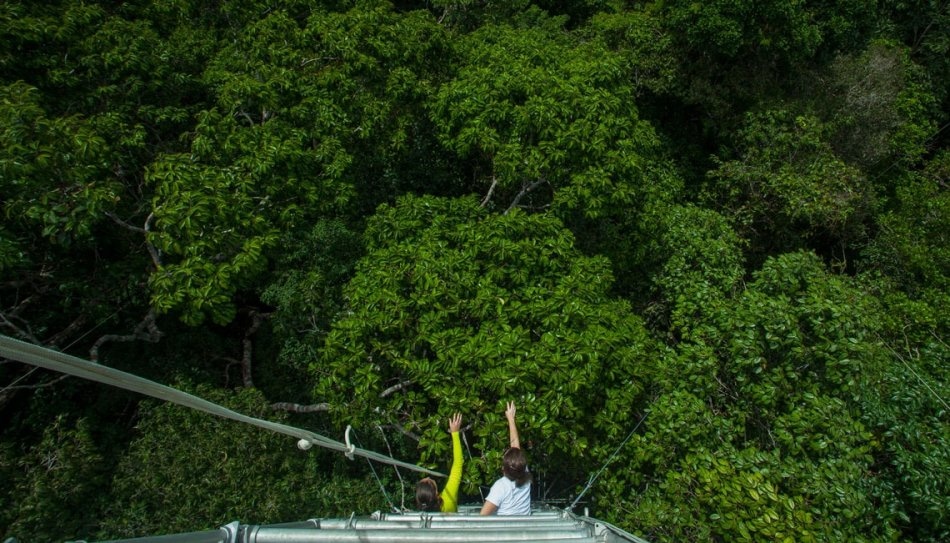Aug 21 2019
The International Panel on Climate Change released the first-ever detailed report on land and climate interactions in early August.
 View from the top of a measurement tower, where researchers monitor critical forest canopy processes such as photosynthesis, plant water fluxes, leaf characteristics, and growth. (Image credit: Joao M. Rosa, AmazonFACE)
View from the top of a measurement tower, where researchers monitor critical forest canopy processes such as photosynthesis, plant water fluxes, leaf characteristics, and growth. (Image credit: Joao M. Rosa, AmazonFACE)
According to this report, forestry, agriculture, and other types of land use make up 23% of human-induced greenhouse gas emissions, but at the same time, natural land processes absorb the equivalent of nearly one-third of the carbon dioxide (CO2) emissions from industry and fossil fuels.
But how long will the Amazon rainforest carry on acting as an efficient carbon sink?
An international research team, including climate scientists from the Department of Energy’s Lawrence Berkeley National Laboratory (Berkeley Lab), explored this question and learned that taking phosphorus-deficient soils into account lowered projected CO2 uptake by an average of 50% in the Amazon, compared to present estimates based on former climate models that did not take into consideration phosphorus deficiency.
The Amazon Basin is very important to help alleviate climate change because of its trees that absorb about a quarter of the CO2 discharged annually from the combustion of fossil fuels.
The research paper titled “Amazon forest response to CO2 fertilization dependent on plant phosphorus acquisition” was published on August 5th, 2019, in the journal Nature Geoscience.
Most predictions of the Amazon rainforest’s ability to resist climate change are based on models that have outdated assumptions; one of those is that a sufficient supply of nutrients such as phosphorus exist in soils to enable trees to take in additional CO2 as global emissions increase. But in reality the ecosystem is millions of years old, highly weathered, and therefore depleted of phosphorus in many parts of the Amazon.
Jennifer Holm, Study Co-Author and Research Scientist, Berkeley Lab
Scientists taking part in the AmazonFACE project observed leaf development and tree growth aboveground, and monitored root growth and activity within soils belowground at a study location north of Manaus, Brazil where ambient CO2 concentration is expected to be artificially increased to allow realistic investigation of how future CO2 concentrations will have an impact on the ecosystem.
“Our improved models now take into account these complexities, and could serve to help paint a more realistic portrayal of how the Amazon, and the tropics in general, will be impacted by climate change and the ability of trees to remove greenhouse gases from the atmosphere,” Holm said.
The study’s lead author is Katrin Fleischer of the Technical University of Munich. Holm was supported by DOE’s Next Generation Ecosystem Experiments (NGEE)-Tropics, and Berkeley Lab co-author Qing Zhu was supported by DOE’s Energy Exascale Earth System Model (E3SM) project.